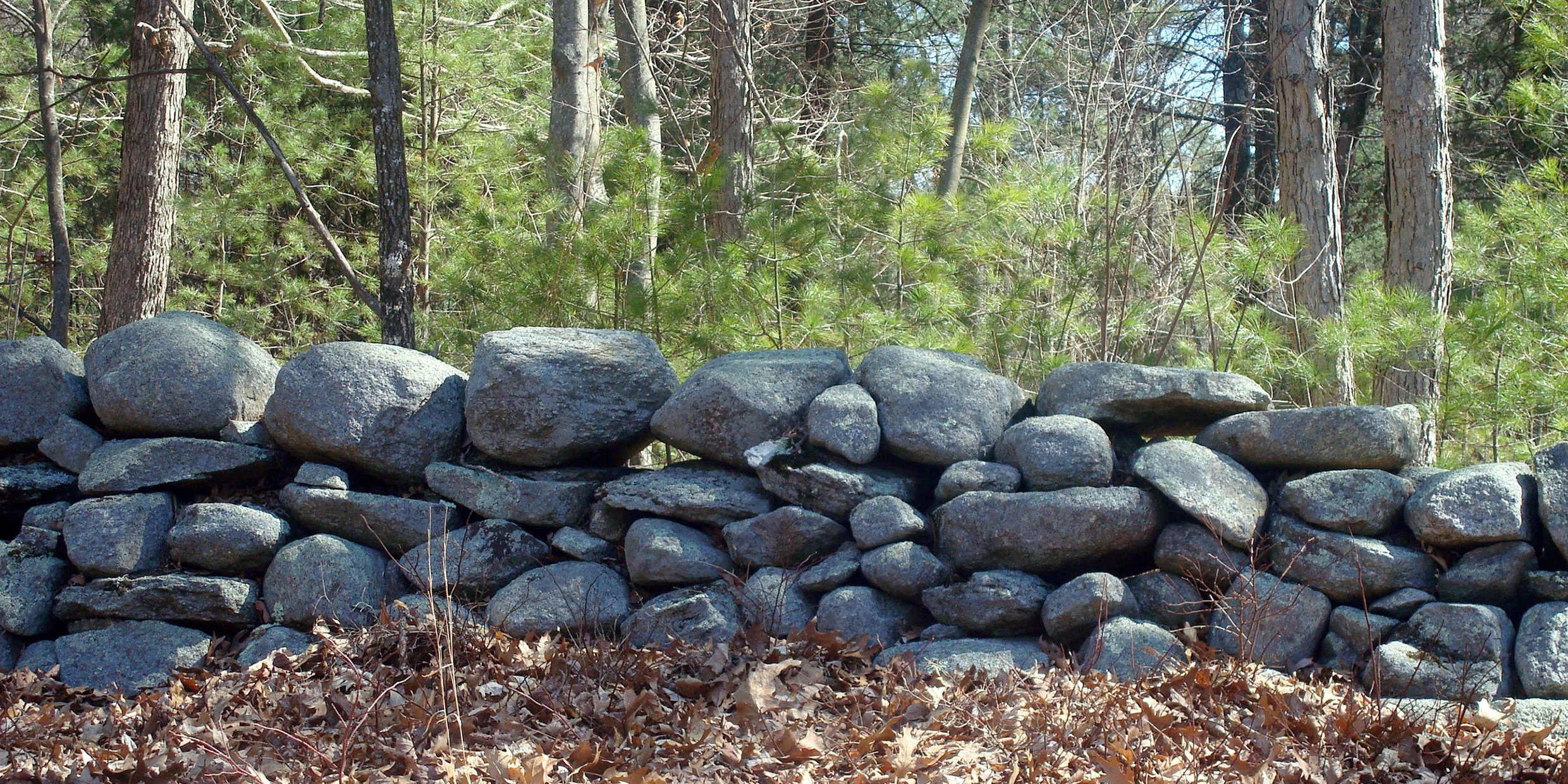Originally published 15 July 1991
One recent weekend I dug post holes for a patio fence. Five holes, each one foot in diameter and two feet deep.
How many cubic feet of dirt were removed? Zero.
What I removed instead were 2.26 cubic feet of rocks. Which, by the time I got them all out, had expanded to 22.6 cubic feet of rocks, leaving holes big enough to use for swimming pools. Some of the rocks were the size of my fist, some where the size of breadboxes.
A job that should have taken an hour took all weekend.
The moral of the story: Don’t dig post holes in southeastern Massachusetts.
If you want to know why not, just look at my new rock collection. These rocks aren’t local. Some of them came from Concord, New Hampshire. Some of them came from Montpelier, Vermont. Some of them came from Montreal.
All of them were dumped here 15,000 years ago, at the end of the last ice age, as the glacier melted.
Rocks left behind
When the glacier moved down from central Canada it scraped the land clean, right down to bedrock. Then, when the glacier retreated, it dropped its load of eroded rock and soil where the ice melted. Fine sand and silt was mostly carried away by melt water and deposited on what is now the floor of the Atlantic Ocean. Heavier rocks were left behind.
In my backyard.
Geologists call this stuff glacial till. No history of New England is complete till you’ve included till.
Native Americans who lived in this region before the coming of Europeans practiced a kind of agriculture that mostly ignored the stones in the soil. A patch of forest was cleared by burning. Heaps of dirt were scraped together and planted with corn, beans or squash, with maybe a fish or two thrown in for fertilizer. When the fertility of the soil declined, a new field was cleared and the process started over. Cultivation was by hoes of shell or bone. It was hardscrabble work, but it worked just fine.
Farming in the European way was not so fine.
The first sound the Pilgrims heard in the New World was the sound of metal hitting stone. They stuck their spades into the ground to dig foundations for their houses: Clank. They whacked at the ground with hoes to plant vegetables: Clank. They drove crow bars into the ground to raise a stockade: Clank. Clank was the sound of the New World resisting the European way of life.
Most of the so-called “soil” of New England is glacial till, and it had to be planted if the first colonists weren’t going to starve. Clearing stones from a field big enough for plowing wasn’t the work of a weekend. It wasn’t the work of a year even. Rather it was the work of a lifetime. The omnipresent stone walls of New England are the record of many lifetimes of backbreaking labor.
Of course, the stony soil was not the only deterrent to the European settlement of New England. Native Americans were a problem. So were wolves. And the forest was an obstacle. The ax took care of the forest. Traps and bounties took care of the wolves. Guns and deceit took care of the Native Americans. But the stones in the soil were ultimately defeating.
Quality farmland scarce
To avoid the stones, the first settlers sought out the few areas of rock-free soil, mostly along streams or on the floors of meltwater lakes that had existed in lowland basins near the end of the ice age. Water flowing into the lakes from the melting ice carried fine powdered rock, which settled onto the bottoms of the lakes, building up thick beds of sediments. The largest glacial lakes, called Lake Hitchcock and Lake Upham by geologists, filled the valley of the Connecticut River from Hartford, Connecticut to St. Johnsbury, Vermont. Other smaller lakes had existed near Concord, New Hampshire, and in the valleys of the Nashua and Sudbury Rivers. Those scattered patches of sediments are New England’s only premier farmland.
When lowlands had been cleared and planted, farmers were forced into the hills. It is said that New England hill farms were so stony that sheep needed sharp noses to graze between the rocks. But it was rocks or nothing. By the mid-19th century, 75 to 80 percent of southern New England had been cleared for farming, and most of that was stony soil.
Only a fool would farm on glacial till if an alternative existed. When less stony land opened up west of the Alleghenies in the early 19th century, New England farmers locked their doors, took a boat on the Erie Canal, and went west. The land reverted to woods. Today, two-thirds of southern New England is wooded, more than at any time since the mid-19th century.
My college campus is a microcosm of the rest of southern New England. It is about two-thirds wooded, but there isn’t a part of those woods that don’t contain stone walls and cellar holes, indicating that at one time the whole place was farmed. I once dug fifteen post holes in the campus woods to set up markers for a nature trail. One hole was on the site of a dried-up glacial pond, and the digging was easy. Fourteen holes were in the glacial till of old fields and pastures, and once the markers were up I swore I would never dig another post hole.
I forgot that vow — until this past weekend when I remembered why I made it.



